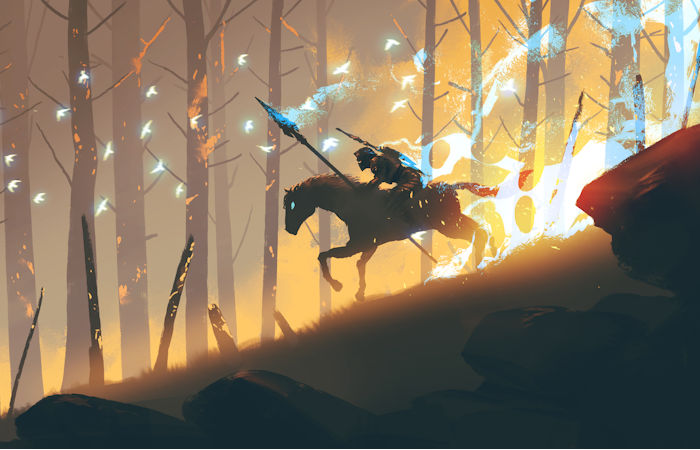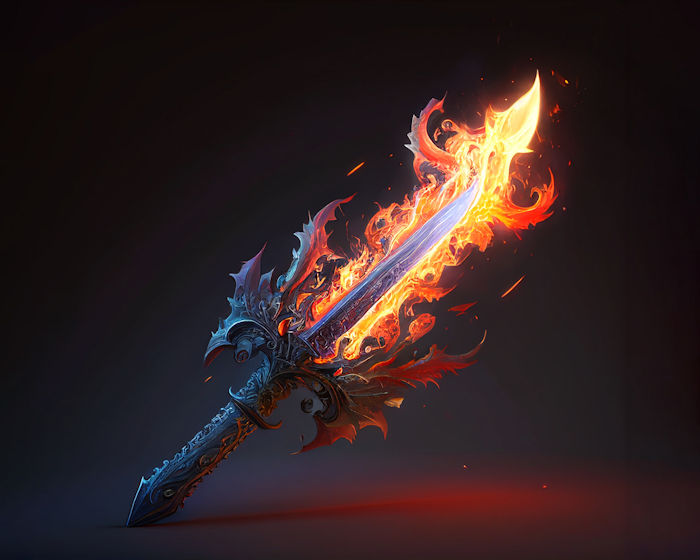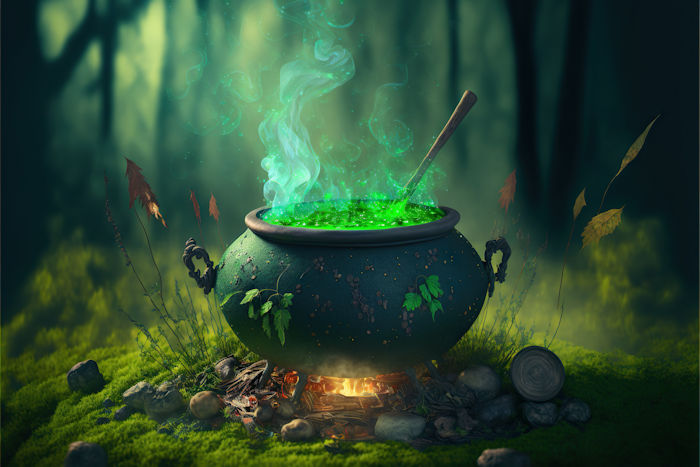Four Magical Treasures Of Tuatha De Danann
A. Sutherland - AncientPages.com - Thousands of years ago, a god-like race known as Tuatha de Danann - the people of the gods of Dana as they were called - came through the air to Ireland.
The arrival of Tuatha de Danaan. Credit: Adobe Stock - danielegay
They came from the north, where they had four cities located on four islands in the North. In these legendary cities - great Falias, shining Gorias, Finias, and rich Murias located to the south - Tuatha de Danann fought their battle for learning.
They brought to Ireland four magical treasures mentioned in early Irish literature.
In "The story of the Tuatha de Danaan," Lady I. A. Gregory writes that "in those cities they had four wise men to teach their young men skill and knowledge and perfect wisdom: Senias in Murias; and Arias, the fair-haired poet, in Finias; and Urias of the noble nature in Gorias; and Morias in Falias itself. And they brought from those four cities their four treasures: a Stone of Virtue from Falias, that was called the Lia Fail, the Stone of Destiny; and from Gorias they brought a Sword; and from Finias a Spear of Victory; and from Murias the fourth treasure, the Cauldron that no company ever went away from unsatisfied..." 1
However, some sources state that Tuatha de Danann brought the treasures from the Celtic Otherworld. Each one of the sacred items was unique, identified with an element, and possessed magical powers.
According to a late medieval Irish manuscript, "Yellow Book of Lecan" (1391 and 1401), the four treasures were: Lia Fáil Stone, the Spear of Lugh, the Sword of Nuada, and the Cauldron of the Dagda.
Stone Of Fál (Lia Fáil)
The Stone of Destiny (Lia Fáil) at the Hill of Tara, once used as a coronation stone for the High Kings of Ireland. Image credit: August Schwerdfeger - CC BY 4.0
From Falias was brought the stone of Fal (Lia Fal) - the stone of Destiny, which was believed to be located near the hill of Tara in County Meath and called the name of every king of Ireland. It was also claimed to keep Ireland above the waves and sea level. The master of his wisdom was Morfessa (or Fessus) of Falias.
The Lia Fáil was thought to be magical: when the rightful High King of Ireland put his feet on it, the stone was said to roar in joy. The stone could also rejuvenate the king and endow him with a long and successful reign. According to Lebor Gabála Érenn, (literally "The Book of the Taking of Ireland"), known in English as The Book of Invasions, Cúchulainn split it with his sword when it failed to cry out under his protégé, Lugaid Riab nDerg; also a legend says that it happened once again at the coronation of Brian Boru in 1002.
Sword Of Lugh - "Invincible Spear”
The second treasure of the Danaans was the invincible sword of Lugh of the Long Arm, which came from the city of Findias. It was also called the “Spear of Victory” and was identified with fire. It had properties similar to the Sword of King Nuada – when thrown, it momentarily hit its target.
Invincible Spear of Lugh. Credit: Adobe Stock - Vector Tradition
Lugh's magical weapons had special powers. Credit: Adobe Stock - grandfailure
However, Lugh possessed not only the Invincible Spear but also several magical weapons. It is said that the Lugh's Spear never missed its target and was so bloodthirsty it would often try to fight without anyone wielding it. The weapon was blazingly hot and became hotter the longer it was used. It was stored in a vat of water at night to keep it from catching fire and scorching the earth.
The Lugh of the Long Arms (sometimes, “Long Hands” or even “Artful Hands”) was the Celtic sun god associated with crafts and smiths, who worked with fire, and his weapons were considered to have magical powers.
The Blacksmith of Falias forged the magical spear for Lugh to use against Balor. The one who held it won every battle – neither the army nor the hero ever resisted it.
Sword Of Nuada - "Shining Sword"
This magical weapon, known as the "Sword of Light" (claideb/claiomh solais) is also one of the lost Four Treasures of Tuatha de Danann. It was made in the northern city of Gorias, one of Tuatha de Danann's legendary cities, ruled by a master of wisdom, Uiscas, who crafted the sword.
No one ever escaped from it once it was drawn from its sheath, and no one could resist it. The Tain legend also describes the sword as "Nuadu's Cainnel"—a glowing bright torch.
The shining sword of King Nuada. Credit: Adobe Stock - Eduardo
The sword was brought to Ireland by King Nuada of the Tuatha de Danann, who became famous when he led his people in the Battle of Moytura (Cath Maige Tuired, meaning ‘the plain of pillars/ towers’) against the Fir Bolg, who ruled Ireland at the time. We do not know the true meaning of the magical "Sword of Nuada." Still, based on some interpretations and the sword's obvious abilities (stabbing, cutting, slicing), it may symbolize justice, law, and truth.
It can also mean the punishment of Ireland’s enemies during the conflict.
However, the sword's light or shining can be considered as "enlightenment, illumination ": sacred wisdom and knowledge.
The Cauldron Of The Dagda
Celtic myths and legends mention many magic vessels. One known as the "Cauldron of the Dagda" or the Cauldron of Plenty, or Undry, was a magical vessel that never ran dry because it was bottomless. It provided a never-ending supply of food and drink to all who deserved it. It was also a great treasure of the Tuatha Dé Danann.
The magical cauldron of Dagda was never empty. Credit: Adobe Stock - Natalia
The magical cauldron, which was the fourth treasure of Tuatha de Danann, also had another ability; it could revive dead warriors. Therefore, it served as a tool to provide rebirth and regeneration. The Cauldron of Dagda - made in the city of Murias - was one of the special attributes of Dagda - "Good God" (also "Great Father' and the "Mighty One of Knowledge." Dagda was considered the greatest of the Irish gods.
It was said that no company ever went away from Cauldron (coire) of the Dagda unsatisfied.
Updated on January 12, 2024
Written by – A. Sutherland AncientPages.com Staff Writer
Copyright © AncientPages.com All rights reserved. This material may not be published, broadcast, rewritten or redistributed in whole or part without the express written permission of AncientPages.com
Expand for references- Lady I. A. Gregory, The story of the Tuatha de Danaan
Daimler M., The Treasure of the Tuatha De Danann
Trident Books, Irish Gods
More From Ancient Pages
-
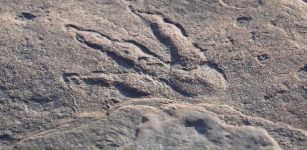 220 Million-Year-Old Dinosaur Footprint Found On Wales Beach By Girl
Fossils | Feb 1, 2021
220 Million-Year-Old Dinosaur Footprint Found On Wales Beach By Girl
Fossils | Feb 1, 2021 -
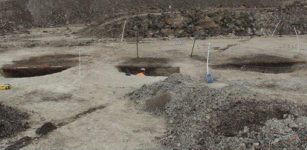 Significant Mesolithic Site With Unusual Pits Discovered In Bedfordshire
Archaeology | Jul 3, 2023
Significant Mesolithic Site With Unusual Pits Discovered In Bedfordshire
Archaeology | Jul 3, 2023 -
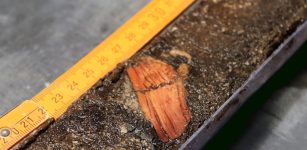 Evidence Europeans Used Slash-And-Burn Methods 9,500 Years Ago For Agriculture Purposes
Archaeology | May 18, 2022
Evidence Europeans Used Slash-And-Burn Methods 9,500 Years Ago For Agriculture Purposes
Archaeology | May 18, 2022 -
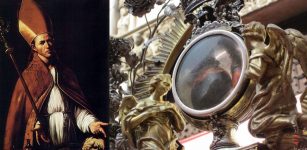 Blood Of St. Januarius – One Of The Most Remarkable Christian Relics
Artifacts | Jun 27, 2017
Blood Of St. Januarius – One Of The Most Remarkable Christian Relics
Artifacts | Jun 27, 2017 -
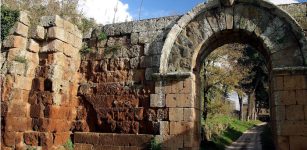 New Clues About The Fascinating Ancient Roman City Falerii Novi Revealed By Scientists
Archaeology | Sep 13, 2022
New Clues About The Fascinating Ancient Roman City Falerii Novi Revealed By Scientists
Archaeology | Sep 13, 2022 -
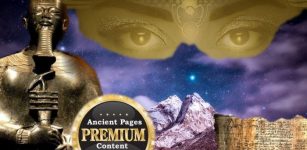 Antediluvian Sacred Tablets And Rare Manuscript Reveal Secret Ancient Egyptian Knowledge
Featured Stories | Apr 13, 2018
Antediluvian Sacred Tablets And Rare Manuscript Reveal Secret Ancient Egyptian Knowledge
Featured Stories | Apr 13, 2018 -
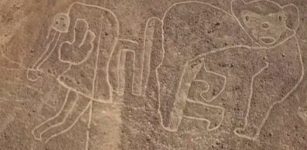 Drones Discover 25 Never-Before-Seen Geoglyphs Near Famous Nazca Lines
Archaeology | Jun 4, 2018
Drones Discover 25 Never-Before-Seen Geoglyphs Near Famous Nazca Lines
Archaeology | Jun 4, 2018 -
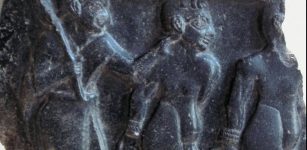 First Sumerian Revolt – People Oppose The Harsh Akkadian Empire
Featured Stories | Apr 14, 2023
First Sumerian Revolt – People Oppose The Harsh Akkadian Empire
Featured Stories | Apr 14, 2023 -
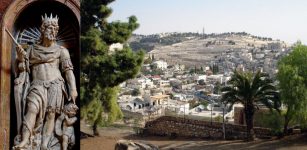 The City Of David – Why Is It So Controversial?
Biblical Mysteries | Jan 9, 2019
The City Of David – Why Is It So Controversial?
Biblical Mysteries | Jan 9, 2019 -
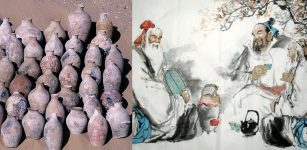 Ancient Civilizations Invented Alcohol 10,000 Years Ago
Ancient History Facts | Sep 13, 2016
Ancient Civilizations Invented Alcohol 10,000 Years Ago
Ancient History Facts | Sep 13, 2016 -
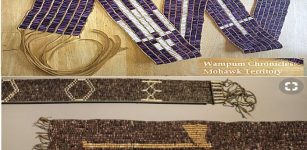 Why Were Wampum Belts Important To Native Americans?
Featured Stories | May 10, 2018
Why Were Wampum Belts Important To Native Americans?
Featured Stories | May 10, 2018 -
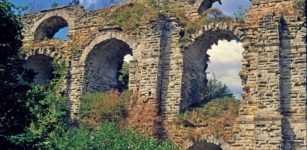 The 426-Km-Long Roman Aqueduct Provided Water For Constantinople – New Study
Archaeology | May 11, 2021
The 426-Km-Long Roman Aqueduct Provided Water For Constantinople – New Study
Archaeology | May 11, 2021 -
 How Did Mesopotamia Change The World?
Civilizations | Jan 18, 2020
How Did Mesopotamia Change The World?
Civilizations | Jan 18, 2020 -
 Tomb Of God Thoth’s High Priest Discovered In Ancient Egyptian Necropolis
Archaeology | Feb 27, 2018
Tomb Of God Thoth’s High Priest Discovered In Ancient Egyptian Necropolis
Archaeology | Feb 27, 2018 -
 A 2,500-Year-Old Planned City In Tarighat, Chhattisgarh, India
Civilizations | Oct 8, 2014
A 2,500-Year-Old Planned City In Tarighat, Chhattisgarh, India
Civilizations | Oct 8, 2014 -
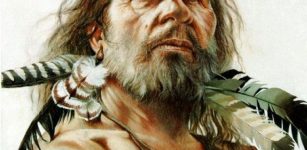 Enigmatic Denisovans Interbred With Modern Humans More Than Once
Archaeology | Mar 22, 2018
Enigmatic Denisovans Interbred With Modern Humans More Than Once
Archaeology | Mar 22, 2018 -
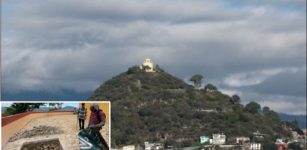 Long-Lost Legendary Ancient Temple Discovered On San Miguel Hill In Mexico
Archaeology | Oct 20, 2023
Long-Lost Legendary Ancient Temple Discovered On San Miguel Hill In Mexico
Archaeology | Oct 20, 2023 -
 Discovered: Mysterious 2,400-Year-Old Ancient Egyptian Shrine Belonging To 30th Dynasty Pharaoh Nectanebo I
Archaeology | Oct 6, 2015
Discovered: Mysterious 2,400-Year-Old Ancient Egyptian Shrine Belonging To 30th Dynasty Pharaoh Nectanebo I
Archaeology | Oct 6, 2015 -
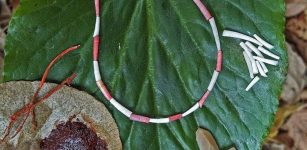 15,000-Year-Old Shell Beads Found Kebara Cave Are The Oldest Known Use Of Organic Red Pigments
Archaeology | Oct 27, 2023
15,000-Year-Old Shell Beads Found Kebara Cave Are The Oldest Known Use Of Organic Red Pigments
Archaeology | Oct 27, 2023 -
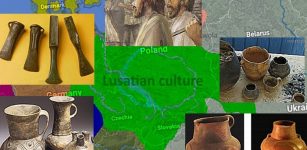 Lusatian Culture: Ancient Traders Of Central Europe Built Strongly Fortified Settlements To Withstand Scythian Attacks
Civilizations | Jan 27, 2024
Lusatian Culture: Ancient Traders Of Central Europe Built Strongly Fortified Settlements To Withstand Scythian Attacks
Civilizations | Jan 27, 2024




